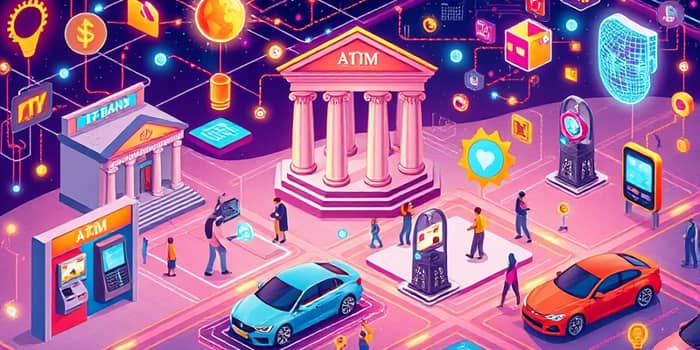
In the digital age, the fusion of finance and connected devices is reshaping the way capital flows, risks are managed, and customer experiences are crafted. Real-time data streams drive smarter decisions that empower financial institutions and consumers alike.
The IoT in banking market is on a meteoric rise, projected to reach $116.27 billion by 2026 at a 26.5% CAGR. Meanwhile, the global IoT in the BFSI sector is forecasted to soar from $249.4 million in 2018 to $2.03 billion by 2023, a staggering 52% annual growth.
By 2025–2027, an estimated 27 to 41 billion devices will connect worldwide, contributing to an overall economic impact valued between $3.9 trillion and $11 trillion annually. These numbers underscore the unprecedented scaling of connected capital in the financial ecosystem.
From payments to asset management, IoT is unlocking new frontiers of convenience and insight.
The true power of IoT emerges when paired with complementary innovations.
Financial institutions leveraging IoT stand to gain on multiple fronts. Revenue growth of 15–20% is attainable through premium, data-driven services. At the same time, operational efficiency improves as processes such as risk analysis, collateral monitoring, and compliance become automated.
Enhanced security and multi-factor authentication via biometrics and geofencing boost customer trust, while real-time fraud detection reduces losses and strengthens institutional reputation.
Despite its allure, IoT adoption in finance is not without hurdles. The expansive collection of sensitive data heightens privacy and security risks, necessitating robust encryption and real-time anomaly monitoring. Integrating billions of devices with legacy systems presents significant technical and cultural challenges.
Moreover, regulatory landscapes around cross-border data transfer and consumer privacy continue to evolve, requiring institutions to develop adaptive compliance strategies that can anticipate shifting requirements.
Looking ahead, the convergence of AI and IoT will drive real-time, predictive decision-making at every level, from routine transactions to complex credit assessments. Voice assistants and wearables will emerge as mainstream banking interfaces, replacing traditional channels.
Edge computing combined with decentralized finance models promises more autonomous and transparent operations, while energy-efficient sensors will support sustainability and "green banking" initiatives by monitoring branch energy consumption.
To maximize IoT’s impact, financial institutions should take a strategic, phased approach.
By thoughtfully addressing security, compliance, and integration challenges, institutions can harness the full potential of connected devices to transform finance. The era of connected capital is here, promising a more efficient, personalized, and sustainable financial landscape.
References





